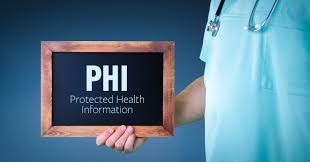Physical Address
304 North Cardinal St.
Dorchester Center, MA 02124
Physical Address
304 North Cardinal St.
Dorchester Center, MA 02124

Protected Health Information (PHI) is a critical concept in healthcare privacy that often leads to confusion and misunderstandings. Understanding what constitutes PHI and how it’s protected is essential for healthcare providers, patients, and anyone involved in the healthcare ecosystem.
Protected Health Information refers to any individually identifiable health information that is created, received, stored, or transmitted by HIPAA-covered entities and their business associates. This includes a wide range of personal health details that could potentially identify a specific individual.
PHI encompasses several crucial elements:
Many individuals and even healthcare professionals sometimes misunderstand the intricacies of PHI. Let’s explore some critical aspects to help clarify what is and isn’t protected under HIPAA regulations.
When examining statements about Protected Health Information, it’s crucial to understand the nuanced nature of healthcare privacy laws. Some statements might seem straightforward but can actually be misleading or outright false.
A false statement about PHI typically:
Not all health information is automatically considered PHI. The critical factor is whether the information can be used to identify a specific individual. This means that:
With advancing technology, the definition of PHI continues to evolve. Digital health records, mobile health applications, and emerging healthcare technologies constantly challenge existing privacy frameworks.
Misinterpreting PHI regulations can lead to:
Healthcare providers, insurance companies, and their business associates must:
Understanding Protected Health Information requires ongoing education and vigilance. While the specifics can be complex, the fundamental goal remains protecting individual privacy and maintaining the confidentiality of sensitive health data.
Healthcare professionals and patients alike must remain informed about PHI regulations. Staying updated on evolving privacy standards ensures better protection of sensitive health information in an increasingly digital world.
Note to Readers: Always consult with legal and healthcare privacy experts for the most current and specific guidance regarding Protected Health Information.